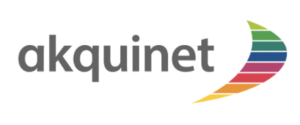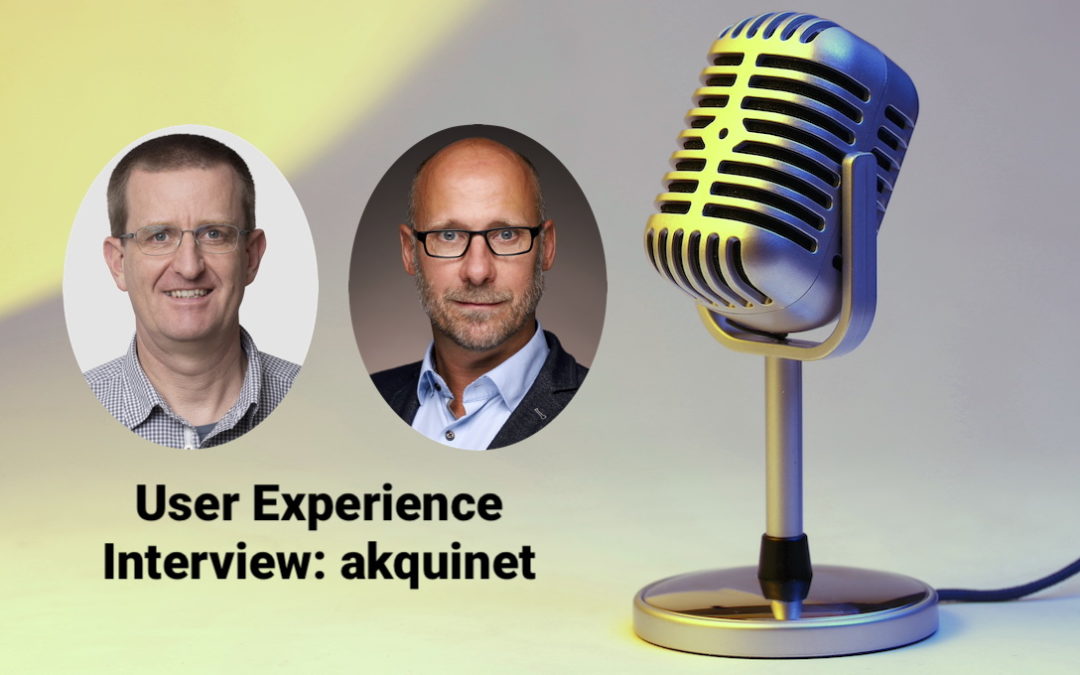As an IT service company, akquinet tech@spree is committed to delivering the best possible service to its customers and developing compelling products. With regard to the diverse industries of its customers and the required technologies, this is a continuous challenge. To provide operational and strategic support for the various internal organizational units, the Project Management Competence Center was established in Berlin, Germany. Its employees are responsible for equipping project teams with the right skills: by putting together teams for projects in line with requirements, and by taking measures for skills development.
Tassilo Kubitz and Torsten Trzewik work in this Competence Center. We wanted to know from them what makes their work so complex, why they decided to use our software, and what changes they have observed since then.
Which challenges motivated you to use iCombine?
Tassilo: Ten years ago, we had just about 35 employees, approximately 30 of them were involved in projects. Everyone worked together on one floor. This meant that our colleagues knew each other personally. Finding the right experts for a technical question, a problem or a project was therefore still quite easy. In recent years, we have grown rapidly and now count 90 employees. Transparency about who could help with a particular topic, technology or methodology was slowly lost when we reached a size of 50 people. When there were challenges in a project, colleagues no longer knew who to turn to within the company, even though the expertise and thus the help was actually so close. This ultimately led to economic and quality problems in the projects, which we actually wanted to avoid. At this point, we asked ourselves how we could make the knowledge and the projects visible in our organization.
Torsten: In Confluence, we already had profiles stored in Word format from our employees. When we send clients a proposal, these profiles are often submitted with it to show the competencies and project experience of the team members. However, this did not help us at all in our internal search for suitable colleagues. It is disproportionately time-consuming to search through several Word files for a combination of certain criteria. In addition, maintaining these documents was always problematic.
Tassilo: The data quality of the profiles was also poor. On-demand, they always had to be updated when we came into an order situation. That pushed everyone involved to their limits. That’s why we decided to look for a scalable and intuitive solution that would allow us to easily create and search competency profiles and then book people to project roles.
How did the implementation of iCombine go?
Tassilo: As head of the Project Management Competence Center, I first put together a group to take a close look at iCombine. The requirements of project management, executives, sales and employees for a skills database with a project planning function were noted down and converted into user stories. We were then able to test the software free of charge for 30 days. We presented the result of the evaluation to the management board in February 2020. The management board, all the heads of the other competence centers, and the executive board agreed to continuing the deployment. Since March 2020, we therefore have an annual subscription. As part of the onboarding project, we then defined all the skills and added them to our iCombine profile catalog. Then the onboarding of the employees began. We also defined our internal workflows so that it becomes clear to everyone what our overall processes look like.
Torsten: We are currently striving to get certified as an ISO 9001 company. So, of course, we are working on consolidating and standardizing the existing processes. When new employees join us, they are given a checklist to complete their onboarding into the company as quickly as possible. This is where iCombine comes in, because we want to integrate the new employees quickly into our projects and development measures. It is also standard practice for colleagues to update their profiles when they have completed a project and developed a skill or interest. Incidentally, the information from iCombine also influences the individual performance reviews. We also use the reports to get an overview of the skills of our workforce. Overall, I find that the tool is already very integral to the company’s process landscape. For us, the implementation has worked extremely well.
What added value do your employees experience through the use of iCombine?
Torsten: The employees have started to think about their own competencies. Many have become explicitly aware of what they can do. This increases self-esteem and has a positive psychological effect.
Tassilo: The employees notice that we can use the tool to address their individual skills, experience and development wishes in a more targeted way – in project staffing and also in feedback talks. In addition, employees can also show that they have expertise in disciplines that are not part of their normal area of responsibility. Through the evaluation, we realize that we don’t just have generalists or specialists , but an increasing number of T-Shape professionals in our ranks. I wouldn’t want to miss this knowledge, because it supports our planning activities immensely.
Torsten: With iCombine we can show what opportunities there are for each individual in the company. When we publish project roles or trainings in the software, our employees can see that if desired. This gives them transparency about what new opportunities and development prospects exist internally. For example, a project management expert can see that there is an exciting certification in the area of law that she has always been interested in. This creates a win-win situation as she continues to develop and qualify for new tasks. It may allow the company to take on a new project in the future that requires this certification. Of course, this also increases employee loyalty.
What added value do your team leaders, managers and executives experience through the use of iCombine?
Tassilo: Managers finally get an overview of the existing skills in the company. We can also break this down and see which skillsets are prevalent in individual areas or teams. Team leaders use the tool to discuss future development scenarios with their team members during performance reviews. From this, we deduce what the strategic need is for building and developing skills. This helps enormously. Typical questions like
- Do we cover the needs of the market with our competence distribution?
- Do we have a blind spot or are we in danger of missing trends?
can now be answered more accurately.
What also helps us a lot is the mapping of our projects and the planned workload. iCombine is in the sense a tool for initiating and planning projects and for booking assignment times. It deliberately does not replace our previous tools that we use in the implementation phase of projects. Our employees typically work on different projects at the same time, and before we started using iCombine, it was difficult for us to keep track of everything. This is different now. We always know who is involved where, with which skills and with which planned workload. With the help of this overview and the resource utilization report, we can create a future forecast, which is enormously relevant to our management and sales. In response to questions such as
- How many billable hours do we have scheduled on projects?
- Do we have capacities for new projects?
we can now find answers quickly. This contributes to transparency and better ability to plan.
Torsten: iCombine has also served us well in the operational area. When the sales department receives a customer inquiry, they can find out within minutes whether we have the required skills and availability to handle a new potential project. This helps us enormously in responding quickly to our customers’ needs. In our business, it is a clear advantage not to have to spend days in the company looking for suitable people, but to be able to find a qualified team in a short time. Of course, this has a very positive influence on our business success.
Which metrics are most important for your organization? How does iCombine support you in measuring and evaluating them?
Tassilo: In the project business, we always want to be able to measure which employee work hours can be billed and which cannot. It is equally important to understand how much time our employees spend on internal strategy projects and external customer projects. To evaluate this, and calculate the profitability of our activities, we use iCombine’s utilization report. This allows us to look into the future and examine our efficiency. At the same time, we can look into the past and compare planned workloads with actual tracked hours from the time tracking tool. This helps us to further optimize our planning activities. In the future, we also want to use the skills reports to measure how the skills in our organization have changed over the years. From this, we will in turn derive further activities for the training of our workforce.
Torsten: We don’t yet measure how quickly we respond to customer inquiries. Perhaps we will do so in the future. As mentioned earlier, iCombine is already helping us to drastically reduce response time. We put a lot of emphasis on agility, which also means being able to plan and re-plan in short intervals. With iCombine, we have a tool at hand that supports us noticeably in this regard.
What trends will be relevant for you in the future in terms of interpersonal collaboration, processes and technology?
Torsten: We see a trend toward hybrid forms of work, i.e., the mixture of home, remote and presence work and collaboration in interdisciplinary teams. Here, it is important for us to further promote interpersonal cooperation, knowledge sharing and joint activities among employees – across locations and divisions. It will be an ongoing challenge to organize this dynamic form of work.
Tassilo: I also think that not everyone will come back to the office after the pandemic. That’s why we are also focusing more on web-based and collaborative applications in our tool landscape, which make distributed planning and working easier.
For team building, in the future we would like to encourage exchanges on topics that in themselves have nothing to do with the work context. iCombine can help us do this by enabling colleagues to connect with each other based on common interests, including hobbies or leisure projects. I see this empowerment and increased networking among each other as an important trend.
Torsten: Such networking would be groundbreaking if it could take place not only within a company, but also across different organizations. Of course, this would have to be done in compliance with data protection laws. But then there could be an opportunity to get to know each other better, or even to put together cross-organizational project teams, because the employees simply complement each other well.

About akquinet:
As a company, akquinet tech@spree is part of akquinet AG, an internationally active IT service provider operating 22 locations. The group of companies sees itself as a human-centered and agile organization. The business focus in Berlin is on the creation of individual software and long-term support throughout the entire lifecycle of a product.
Our interview partners:
 Tassilo has been working at akquinet’s Berlin location for over 10 years and currently heads the Project Management Competence Center. He is responsible for agile organizational development, digital transformation, agile leadership and self-organization.
Tassilo has been working at akquinet’s Berlin location for over 10 years and currently heads the Project Management Competence Center. He is responsible for agile organizational development, digital transformation, agile leadership and self-organization.
 Torsten has already been working for akquinet for more than 25 years and has evolved from software engineer to project manager.
Torsten has already been working for akquinet for more than 25 years and has evolved from software engineer to project manager.
How can my company become more agile?
Do you also want to increase the agility of your organization and work in a more human-centered way? Then check out the possibilities that iCombine can open up for you. Start directly with the free trial or arrange a personal demo appointment with the iCombine team.
Featured image by Freepik


